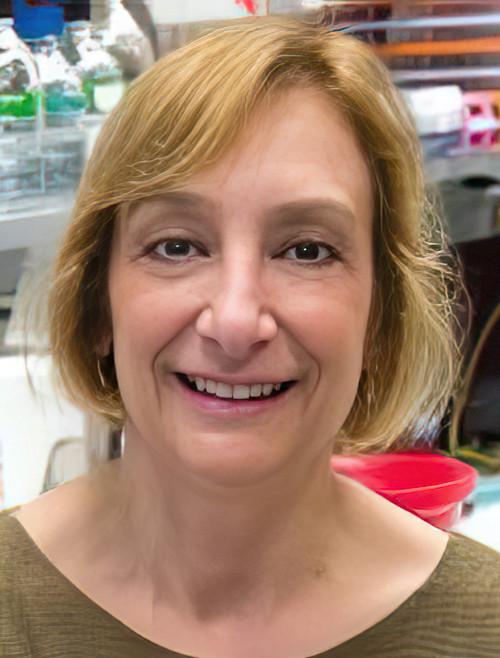University of Chicago Study Determines Certain Gut Bacteria Can Help Prevent Food Allergies and Other Gastrointestinal Illnesses
With further research, clinical laboratories may soon be performing macrobiotic testing to measure certain bacterial levels in patients’ gut bacteria
New insights from the University of Chicago (UChicago) into how human microbiota (aka, gut bacteria) play a role in food allergies has the potential to change the way a number of gastrointestinal health conditions are diagnosed and treated. This would give microbiologists and clinical laboratories a greater role in helping physicians diagnose, treat, and monitor patients with these health issues.
Past research has shown that certain gut bacteria can prevent antigens that trigger allergic reactions from entering the bloodstream. For example, Clostridium bacteria in the stomach produce a short-chain fatty acid known as butyrate, a metabolite that promotes the growth of healthy bacteria in the gut. This helps keep the microbiome in balance.
One way butyrate is created in the gut is through the fermentation of fiber. However, a lack of fiber in the diet can deplete the production of butyrate and cause the microbiome to be out of balance. When this happens, a state known as dysbiosis occurs that disrupts the microbiome and can lead to food allergies.
Without butyrate, the gut lining can become permeable and allow food to leak out of the gastrointestinal tract and into the body’s circulatory system. This reaction can trigger a potentially fatal anaphylactic response in the form of a food allergy. Thus, eating enough fiber is critical to the production of butyrate and to maintaining a balanced microbiome.
But today’s western diet can be dangerously low in soluble fiber. Therefore, the scientists at the University of Chicago have developed “a special type of polymeric molecule to deliver a crucial metabolite produced by these bacteria directly to the gut, where it helps restore the intestinal lining and allows the beneficial bacteria to flourish. … these polymers, called micelles, can be designed to release a payload of butyrate, a molecule that is known to help prevent food allergies, directly in the small and large intestines,” according to a UChicago news release.
This will be of interest to microbiologists, in particular. It’s another example of researchers connecting a specific species of bacteria in the human microbiome to a specific benefit.
The University of Chicago scientists published their findings in the journal Nature Biomedical Engineering titled, “Treatment of Peanut Allergy and Colitis in Mice via the Intestinal Release of Butyrate from Polymeric Micelles.”

“It’s very unlikely that butyrate is the only relevant metabolite, but the beauty of this platform is that we can make polymers with other microbial metabolites that could be administered in conjunction with butyrate or other therapies,” said Cathryn Nagler, PhD (above), Bunning Family Professor in the Biological Sciences Division and Pritzker School of Molecular Engineering at UChicago and a senior author of the study. “So, the potential for the polymer platform is pretty much wide open.” As further research validates these findings, clinical labs are likely to be doing microbiomic testing to monitor these therapies. (Photo copyright: University of Chicago.)
Restoring Butyrate in the Gut
One way to treat this anomaly has been through a microbiota transplant—also called a fecal biota transplant—where the administration of a solution of fecal matter is transplanted from a donor into the intestinal tract of the recipient. This transplant alters the recipient’s gut microbial composition to a healthier state, but it has had mixed results.
So, the UChicago researchers went in another direction (literally). They created an oral solution of butyrate and administered it to mice in the lab. The purpose of the solution was to thwart an allergic reaction when the mice were exposed to peanuts.
But there was a problem with their oral solution. It was repulsive.
“Butyrate has a very bad smell, like dog poop and rancid butter, and it also tastes bad, so people wouldn’t want to swallow it,” Shijie Cao, PhD, Postdoctoral Scientist at the Pritzker School of Molecular Engineering at UChicago and one of the researchers who worked on the project, told Medical News Today.
The researchers developed a new configuration of polymers that masked the butyrate. They then delivered these polymer micelles directly into the digestive systems of mice that lacked healthy gut bacteria or a proper gut linings.
The treatment restored the microbiome by increasing the production of peptides that obliterate harmful bacteria. This allowed more of the beneficial butyrate-producing bacteria to emerge, which protected the mice from an anaphylactic reaction to peanuts and even reduced the symptom severity in an ulcerative colitis model.
“We were delighted to see that our drug both replenished the levels of butyrate present in the gut and helped the population of butyrate-producing bacteria to expand,” said Cathryn Nagler, PhD, Bunning Family Professor in the Biological Sciences Division and Pritzker School of Molecular Engineering at the University of Chicago and a senior author of the study, in the press release. “That will likely have implications not only for food allergy and inflammatory bowel disease (IBD), but also for the whole set of non-communicable chronic diseases that have been rising over the last 30 years, in response to lifestyle changes and overuse of antibiotics in our society.”
Future Benefits of UChicago Treatment
According to data from the Asthma and Allergy Foundation of America, about 20 million Americans suffered from food allergies in 2021. This includes approximately 16 million (6.2%) of adults and four million (5.8%) of children. The most common allergens for adults are shellfish, peanuts, and tree nuts, while the most common allergens for children are milk, eggs, and peanuts.
The best way to prevent an allergic reaction to a trigger food is strict avoidance. But this can be difficult to ensure outside of the home. Therefore, scientists are searching for ways to prevent food allergies from happening in the first place. The micelle technology could be adapted to deliver other metabolites and molecules which may make it a potential platform for treating allergies as well as other inflammatory gastrointestinal diseases.
“It’s a very flexible chemistry that allows us to target different parts of the gut,” said Jeffrey Hubbell, PhD, Eugene Bell Professor in Tissue Engineering and Vice Dean and Executive Officer at UChicago’s Pritzker School of Molecular Engineering and one of the project’s principal investigators, in the UChicago news release. “And because we’re delivering a metabolite like butyrate, it’s antigen-agnostic. It’s one agent for many different allergic indications, such as peanut or milk allergies. Once we begin working on clinical trials, that will be a huge benefit.”
Nagler and Hubbell have co-founded a company called ClostraBio to further the development of butyrate micelles into a commercially available treatment for peanut and other food allergies. They hope to begin clinical trials within the next 18 months and expand the technology to other applications as well.
Further research and clinical trials are needed to prove the validity of using polymer micelles in the treatment of diseases. But it is possible that clinical laboratories will be performing microbiomic testing in the future to help alleviate allergic reactions to food and other substances.
—JP Schlingman
Related Information:
Peanut and Food Allergies May Be Reversed with Compound Produced by Healthy Gut Bacteria
Time Release Polymers Deliver Metabolites to Treat Peanut Allergy and Colitis
Food Allergies: Reversing the Old, Preventing the New with Gut Bacteria
Scientists Reverse Food Allergies by Targeting the Microbiome
Polymers Help Protect Mice from Anaphylactic Reaction to Peanuts, UChicago Research Finds



